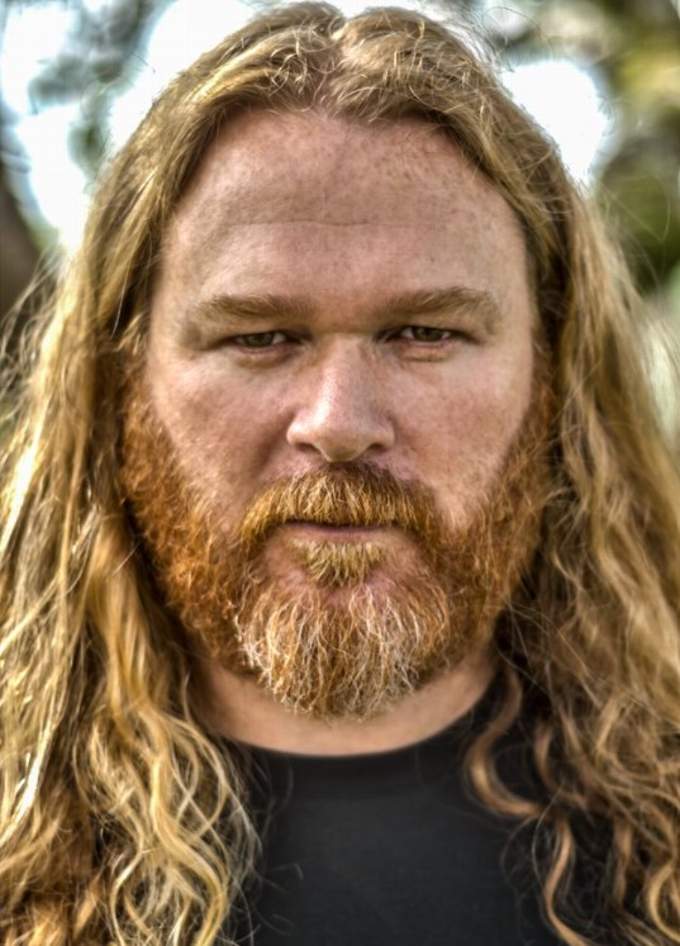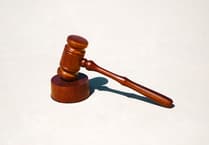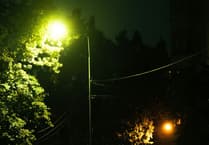STREAMING service Netflix recently released new sequel to its successful series Vikings, but set 100 years later in the 11th century and focusing on the famous character from the Icelandic sagas Leif Erikson (played by Sam Corlett) and his fearless sister Freydis Eriksdottir (Frida Gustavsson).
Among other achievements this pair are credited with sailing from the Norse colony in Greenland and founding the short-lived settlement of Vinland in North America.
Other historical characters featuring in the action-packed scenes include Saxon King Aethelred the Unready, Danish King Canute, Norse warrior Harald Hardrada and Norman Duke turned King William the Conqueror.
Vikings: Valhalla is rather epic in scale, with the action sequences largely filmed in Co Wicklow in the Republic of Ireland.
Among the stars of the new show is Julian Seager, who divides his time between living in Cornwall and Los Angeles and whose credits have included roles in TV’s Doc Martin and Poldark, and in films including the Fisherman’s Friends movie based on the story of the Cornish sea shanty singers’ group.
As well as playing the Viking character Jarl Gorm in the new historical series, Julian – who looks like many people’s idea of a shaggy, bearded Viking – is making a name for himself with cookery videos under the name of ‘Hairy Foody Guy’.
Ahead of the series starting, Cornish Times reporter Simon Artymiuk asked him about these roles and his life in Cornwall and these were his responses.
Q: I have just been watching some trailers for the Vikings: Valhalla production and it really looks superb with high production values and great costumes and sets with a high degree of historical accuracy. Can you tell me a bit about the plot, which I gather has Leif Erikson, the founder of the Viking North American settlement as its central character, and about the role of your character, Jarl Gorm, in the story?
A: I'm afraid I'm under an NDA and can't divulge any other information that you haven't already garnered from the trailers and some articles written by Jeb Stuart the writer. (he wrote Die Hard too!)
It's set 100 years in the future with all of our favourite characters from Vikings leaving us to follow their legacy. I can't say anything about my character either. We all have to wait until the 25th February!
Q: I’ve just been reading that a lot of filming was done in the Co Wicklow area of Ireland – can you tell me why that area was chosen and whether the background of the Covid crisis made filming there difficult at times?
A: Wicklow is an area of outstanding natural beauty and most of the original Vikings Seasons were filmed there. I think it would of been weird to change locations. It helped me as an actor to feel the legacy that Vikings had laid out. I was a big fan of the original show and wanted my performance to respect what had been created so well before our time.
It was quite surreal at times working under COVID restrictions, but we had a very good dedicated covid team and all the actors followed the guidelines laid down as nobody wanted to catch it and force changes on production schedules and face the dreaded 2 weeks in isolation!
Q: People often think of Vikings as ruthless and savage – but do you think Vikings: Valhalla will change that perception? What was it like to film the battle and longship scenes?
A: You will have to watch it to see if it changes your perception. Everybody sees things differently. Rowing a Viking longship was amazing. Within 30 minutes we were rowing well as a team. Battle scenes are always amazing whatever the film/TV show. Massive respect to the stunt teams in film/TV productions they are the unsung heroes!
Q: I believe you’re originally from the Medway area of Kent but have some Scottish ancestry and believe you may have some Norse heritage from that – can you tell me a bit about that?
A: My surname is one of the oldest Norse names in history it means Sea Spear or Sea Warrior which literally translates as Viking. My Mum was in the Orkneys as a child and I feel at home in the Highlands.
Q: I appreciate you can’t divulge where exactly you live in Cornwall but can you indicate which area perhaps? Eg South East Cornwall, North Cornwall coast or West Cornwall, and how did you come to choose it as an area to live? Was it as a result of some of the productions you’ve been involved in like Doc Martin, Fisherman’s Friends and Poldark?
A: I live on the beach. That's as much as im saying regarding my location!
I wasn't very far away before Cornwall as I lived in Devon for a long time hence being cast in lots of productions in the Westcountry.
Initially I always came down from Devon to Cornwall to Dive or Snorkel because if conditions weren't good on the south coast then within 30 minutes in some cases you could be on the north coast with much better conditions. I fell in love with Cornwall and always wanted to be near the sea as I was born on an island and love and respect the ocean. So when I was given an opportunity to live in Cornwall I took it!
Q: Can you say a bit about your roles in those shows and films, as they’re something Cornish readers are obviously proud of hosting and have helped to put our county in the spotlight for millions of viewers. A: I've been in Doc Martin as a local (Tom) for 10 years. I love being part of a lovely production That's so well loved globally. I love filming in Cornwall..it's perfect. Poldark was fantastic as was Fisherman's Friends. I loved being the only bad guy in such a lovely film. I also support local film too and a Cornish made war film Penitent is winning awards globally right now we have over 40 so far. The film is about ptsd and the struggles of dealing with that in the armed forces.
Q: You juggle your time between homes in Cornwall and Los Angeles – how long have you been doing that for, and is it easy to manage, especially in the recent pandemic crisis?
A: I left Los Angeles as COVID hit as I had a feeling this was going to be a global issue and wanted to be in the same country as my family if so.
Q: I gather you won a Best Supporting Actor award for a horror short film – what did your role involve there?
A: It's a Short Horror called Baghead. I play The Gatekeeper who protects a witch with unique powers. The short won 50+ prestigious awards globally and qualified for the Short Film Oscars. Sadly it didn't get selected but I was happy to win an award at the British Horror Film Festival in London in 2019. I have been in award winning productions before but never individually won one for myself.
I was very proud. The short movie is now being made into a full Hollywood feature by StudioCanal. They have the same brilliant director Alberto Corredor but sadly recast all the original cast which was a bit of a sad time for some of us as we were emotionally invested in such a great movie. I wish it well!
Q: Cookery and making use of waste food is a big thing these days. When did you get the idea for the Hairy Foody Guy vlogs and are you getting a good response from viewers?
A: I've been cooking since I could stand. I'm a foodie for life and always liked cookery shows. Winter was approaching and I just thought about it and did it.
I wanted the show to cover anything food related so liked the idea of challenges, World records, food ideas, wacky recipes and even reviewing supermarket and local food such as seafood or pasties. We have a popular playlist called pasty vs pasty promoting and reviewing Cornish Pasty Shops!
The channel has only existed for 3 months but there are already over 1000 subscribers and we hope with this article we might gain some more of our expanding foodie family as I enjoy answering questions and food challenges. Its been a whole lot of fun and a great creative outlet.
It's 3.33am - I'm off to bed as I've just done 7 auditions as I'm working on LA time!
For a trailer for the Vikings: Valhalla series, which is being screened on Netflix from February 25, see https://www.netflix.com/gb/title/81149450 and https://www.imdb.com/title/tt11311302/
For Julian’s Hairy Foody Guy cookery videos see https://www.youtube.com/c/HairyFoodyGuy?app=desktop
MORE ABOUT WHO THE VIKINGS WERE FOR KIDS
Our fascination with Vikings seems to be never-ending, and with the successful release of series Vikings: Valhalla, and with series two already confirmed (https://movieweb.com/netflix-vikings-valhalla-score-100-rotten-tomatoes/), we asked former school teacher Becky Cranham from school resources creators PlanBee (https://planbee.com/) what the Vikings were really like.
She said: “The Vikings are often thought of as just marauding, pillaging warriors but there was a lot more to them than that!"
Becky has pulled together some fascinating facts about the Vikings and their way of life:
Where did the Vikings come from?
The Vikings came from Norway, Sweden and Denmark. These three countries are known collectively as Scandinavia.
Why did the Vikings come to Britain?
The Vikings came to Britain and other countries for many different reasons but one of the main reasons was a lack of farmland in Scandinavia. There was a large population surge in Scandinavia and there was no longer enough land to go around, so they travelled to Britain where there was plenty of good farmland.
When did the Vikings first come to Britain?
The Vikings first came to England from Norway in the 790s, but they didn’t come to farm to begin with. They raided the east coast of England looking for riches, attacking the towns and then returning to Scandinavia with their plunder.
The first recorded Viking raid in Britain was of Lindisfarne monastery on Holy Island, off the coast of north-east England, in 793. Lindisfarne was one of the most sacred Christian monasteries in England, and the people were shocked at the brutal attack. The Vikings, however, were not Christians and saw the unguarded monastery as easy prey.
What was a Viking longboat?
Scandinavia has long coastlines so the Vikings used boats as the easiest way to get around. They were good at developing ships that were fast and safe. It is thought that Viking longboats were developed from the narrow boats used in prehistoric times, but they made many improvements to the shape and structure.
Longboats (also known as ‘drakkars’) were the perfect shape for invading coastal towns because they could sail all the way up to the sandy coast without the need for an anchor. This allowed them to sneak up on the towns, ready to attack before the townspeople had a chance to defend themselves.
Who was living in Britain at the time of the Viking invasions?
Anglo-Saxons (from Denmark, Germany and the Netherlands) had been living in Britain since the beginning of the 5th century. The Anglo-Saxons came to Britain after the Romans left. The Anglo-Saxons and Vikings both lived in Britain until 1066 but they spent most of the best part of 300 years fighting each other.
What did the Vikings believe?
The Vikings were pagans who believed in lots of different gods. They had lots of myths about the gods, as well as dragons and giants, that were passed down orally from generation to generation. The Vikings believed that the main gods lived in a world in the sky called Asgard (which will be familiar to those who have seen the Thor fantasy and sci-fi adventure films starring Chris Hemsworth as the Norse god Thor and Tom Hiddleston as his mischievous brother Loki).
Many Vikings converted to Christianity once they arrived in Britain, although many of them just added the Christian god to their existing belief system.
10 of the main gods of Norse mythology:
• Odin was the wisest god and most powerful god. He was the ruler of Asgard.
• Thor was the god of thunder and was considered to be the strongest of all beings. He was Odin’s son.
• Frigg was the goddess of love and fate. She was Odin’s wife and the queen of Asgard.
• Baldur was the god of light, beauty, love and happiness.
• Vidar was the god of vengeance. He was the son of Odin and a giantess.
• Freya was the goddess of love, but she is also associated with beauty, sorcery and gold.
• Tyr was the god of war. It was Tyr who decided who would win a war.
• Brage was the god of poetry and prose. He was very wise and eloquent.
• Sif is the goddess of grain and fertility. She was married to Thor.
• Idun was the goddess of spring and eternal youth. In the mythical tales, Idun guards the apples of youth.
What were Viking houses like?
The Vikings, like us, had different house designs, but most people lived on farms in small huts made of wood. They often had turf or thatch roofs. Richer families lived in a large house that was a similar shape to a Viking ship. It was supported on the outside by poles.
Another popular design was the pit house. A hole was dug about a meter into the ground. The surrounding dirt was then used as a wall. This had the advantage of keeping in some of the warmth from the ground.
What did Vikings wear?
If you were a Viking, your clothes would depend on what you did and how rich you were. Generally, people dressed for warmth and comfort rather than fashion. Most clothes were made from wool and linen, and were dyed using vegetable dyes to make them colourful. Both men and women wore a lot of jewellery, especially brooches which were used not just as an accessory but to fasten clothes together.
What did Vikings do?
Wealthy Vikings earned their living from the renting out the land they owned to tenants and from the produce that came from the land. Most Vikings were farmers and self-sufficient. They would grow their own crops and keep cattle for dairy products and meat. Lots of Vikings were also merchants and traders who sold their produce and traded their wares, such as jewellery. Some were skilled craftsmen who built boats or crafted weapons. At the very bottom of society were the slaves who worked in the fields and houses doing hard manual labour.
What did Viking women and children do?
It was a woman’s job to look after the home, doing all the cooking, cleaning and household chores. They milked the cows and preserved the meat ready for the winter months. They also spun wool into thread to make cloth. They made all the clothes using a weaving loom and also made wall hangings. It was also the job of the women to weave the sails for Viking ships.
Children did not go to school because there weren’t any schools, but they helped their parents with jobs at home. Some boys, however, were taught to read and write the rune characters of the Viking alphabet.
What was Viking law and order like?
Viking societies had a hierarchy system. Most Viking countries were ruled by a king. There were also chieftains and earls who were very important. Chieftains often had armies of their own and would have large households and own vast areas of land.
The Vikings had laws for free men and women, although these were not written down anywhere. These laws were passed down orally from generation to generation. Honour was a crucial part of Viking life and disobeying any of the laws brought disgrace to the whole family.
11 fascinating Viking facts:
• The Vikings didn’t wear horned helmets! Popular culture often portrays Vikings wearing helmets with horns but there is no evidence to show that this was true.
• The Vikings had a written language using a system of letters called runic alphabet. Each rune had a special meaning because it was thought that the runic alphabet came from the gods.
• The Vikings kept slaves and would often bring slaves back to Scandinavia from Britain and other countries. The punishment for crimes like murder and theft was slavery too. Slaves were an important commodity and were often traded for other products.
• Vikings were often laid to rest in boats. When important Vikings died, they were placed in a burial ship along with goods, such as weapons, tools, clothing and furniture. Sometimes slaves were even sacrificed and laid in the burial ship too!
• There was a special group of Viking warriors called beserkers who went into battle without armour and fought in a trance-like fury, howling like wolves and dogs. We get the phrase ‘going beserk’ from these beserkers.
• Vikings were much cleaner and more hygienic than many other people at the time. They bathed at least once a week and many items, such as razors, tweezers and combs, have been found in VIking burial ships.
• Viking men preferred to be blonde. Dark-haired Vikings would often use a soap that contained lye on their hair and beards to lighten them.
• Vikings travelled much further than Britain. In fact, a Viking called Leif Erikson sailed all the way to North America. He is the first known European to set foot in America, 500 years before Christopher Columber got there!
• Some of our days of the week are named after Viking gods. Thursday is named for the god Thor, for example, while Friday is named for the goddess Frigg.
• The Vikings ate only twice a day. They would have a meal soon after getting up called ‘dagmal’ (or ‘day meal’) and a meal in the evening after the working day was finished called ‘nattmal’ (or ‘night meal’).
• We get the name ’Thursday’ from the Norse god, Thor.
Another topical fact is that Russia had its origins when Viking traders from Sweden known as the ’Rus’ (thought to mean they who row or pay ship service) used the East European river systems between the Baltic and Black Seas to trade with the rich city of Constantinople and established the trading towns of Novgorod and Kiev - now Kyiv, the capital of Ukraine - while intermarrying with local Slavic people. And that is why, 1,000 years later, a Russian leader is causing terror while trying to take back those ancestral lands.



.jpg?width=209&height=140&crop=209:145,smart&quality=75)
